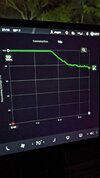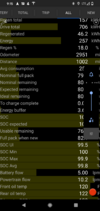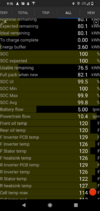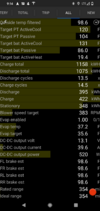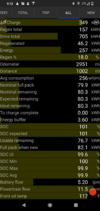AlanSubie4Life
Efficiency Obsessed Member
Yes I remember. And I remember it happened very quickly. I just worry about those early results showing quick recovery being impacted by temperature issues (looked low capacity because the pack was very chilly, etc.).but when we charged it to 100% on a V3 SuC it reached 80,5kWh straight away. Ive posted these results here, maybe two months back.
I just see a lot of reports recently from LR Y/3, etc, with 82.1kWh FPWN, but with energies in the mid-79kWh range.
And we have a number of examples with owners who see no evidence of recovery (much more rare with Peformance owners but @conv90 definitely had issues). It isn’t just one off, I don’t think, anyway.
I feel like if it doesn’t recover to something in the ballpark in the first couple full charges (still below 80kWh), there might be little hope for getting to 81kWh (all temps being equal, etc.).
Could be wrong though.
It will be interesting. I guess yeah if you get to 80.6kWh or 80.9kWh or so from where you are now, I would believe it is maybe just a balance/calibration issue and actually even the low initial capacity packs can recover.Then back to 60% daily...In order to disprove your theory (@AlanSubie4Life) I need to get to 80,9kWh, I guess. Way to go
In the case of your Performance I guess I don’t think an artificially limited pack makes sense. But you could record voltages at low SoC I guess (I assume it maxes out at 403V at 100% as expected). Might be useful to compare to someone with the 77.8kWh pack at some point. Or to someone with an 82.1kWh with high capacity.





